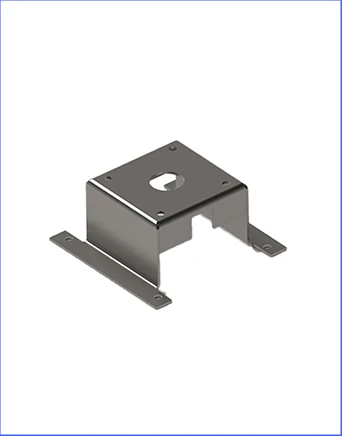Time to read: 6 min

In the quest for materials that combine strength with lightweight properties, titanium and aluminum stand out. This comprehensive guide compares these two metals, exploring their unique properties, applications, and considerations for material selection in prototyping.
Introduction to Titanium and Aluminum
When it comes to material selection for parts production, strength and weight are paramount. Both titanium and aluminum are popular choices for their lightweight and strong properties, making them ideal for various industries.
Elemental Composition and Properties
- Titanium: Contains elements like hydrogen, nitrogen, oxygen, iron, carbon, and nickel, with titanium as the major element.
- Aluminum: Composed of elements such as silicon, magnesium, zinc, manganese, copper, chromium, and iron.
Electrical and Thermal Conductivity
- Titanium: Exhibits low electrical conductivity, about 3.1% of copper's conductivity.
- Aluminum: A relatively good conductor of electricity with 64% of copper's conductivity, making it suitable for heat sinks, heat exchangers, and cookware.
Weight Comparison
- Aluminum: With a density of 2712 kg/m3, it is significantly lighter than titanium.
- Titanium: Has a density of 4500 kg/m3, making it heavier than aluminum but offering strength with less material.
Corrosion Resistance
- Titanium: More corrosion-resistant than aluminum, with high biocompatibility.
- Aluminum: Forms a protective oxide layer, providing resistance to corrosion.
Applications of Titanium and Aluminum
- Titanium: Used in aerospace, healthcare, consumer goods, and industrial applications due to its strength, low thermal expansion, and corrosion resistance.
- Aluminum: Employed in electrical applications, transportation, household items, and machinery due to its conductivity, lightweight, and rust resistance.
Unofactory Manufacturing Capabilities
At Unofactory, we specialize in rapid prototyping services using premium materials like titanium and aluminum. Our team of experts has extensive knowledge of various metals' properties, ensuring that we provide tailored recommendations for your specific needs.
Choosing Between Titanium and Aluminum
Selecting the right material for your project involves considering factors such as cost, applications, machinability, and aesthetic requirements.
- Cost: Aluminum is generally more cost-effective for fabrication and casting.
- Applications: Consider the specific needs of your component and the environment it will be exposed to.
- Machinability: Aluminum is easier to machine and process, making it ideal for quick parts production.
- Machining Waste: Aluminum is often the preferred choice for complex geometrics due to its lower cost.
- Aesthetic Requirements: Titanium has a dark silver appearance, while aluminum is silvery white, affecting the surface finish.
FAQ – Titanium Vs. Aluminum
- Which Metal Should I Choose? The choice depends on the final product's application, cost, strength, and machinability.
- How to Differentiate Between Titanium and Aluminum? Titanium is harder and has a dark silver color, while aluminum is silvery white to dull grey.
- Which Lasts Longer? Titanium has better rigidity, durability, and corrosion resistance, making it more long-lasting.
Conclusion
Titanium and aluminum are essential metals in the prototyping industry, each with unique properties and applications. Understanding these differences and considering various factors will help you make an informed decision for your project. For expert guidance and manufacturing services, trust Unofactory to bring your designs to life.




